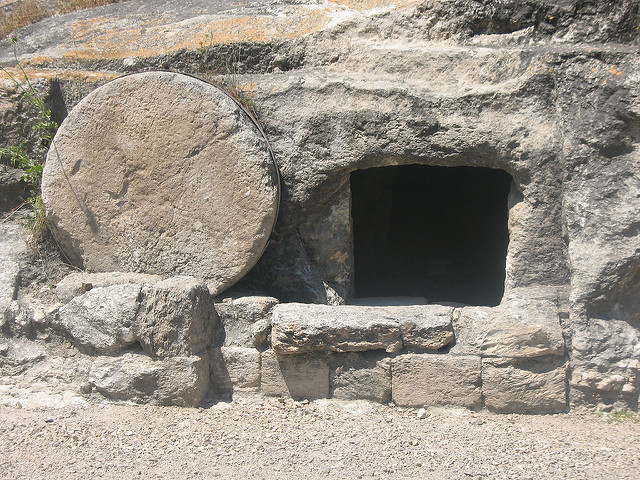Genesis 35 finds Jacob on his way to Bethel. He’s leaving Laban and the current conflict behind, but on the way Jacob discovers Rachel’s hidden gods. They were household figures made of soft stone and wood. They were family idols common among Laban’s faithless crew. Genesis 35:4 So they gave Jacob all the foreign gods they had and the rings in their ears, and Jacob buried them under the oak at Shechem. The question quickly came, “What do you do with a buried god?” In the realm of all things human, what is buried is concluded. What is buried is closed, finished. When Jacob buried those gods, he did so with the knowledge that they would stay there. Buried gods have no way out. Buried gods decay with the passing of time and the elements of earth.
Move ahead and you’ll find another assumption.
When Pilate and the temple priests released the body of Jesus to Joseph of Arimathea and Nicodemus, they did so with some confidence that the matter was concluded. After all, whoever heard of a god, or in this case, The Son of God, coming back from the dead. They thought that a dead and buried Jesus would have ended the matter. It was written in the history of the lives of their patriarchs. However, this Jesus was like none other and the purpose of His burial was meant to reveal the power of His own Resurrection. In fact, the only way for Jesus to rise from the grave was to first be buried. And in this case, even a watch (guarding soldiers) and a sealed tomb (with a signet ring) could not and would not keep Jesus in the earth. In three days, just as He said, Jesus rose from the grave. And in His hands He held the most significant keys to mortal man: Revelation 1:18 I am he that liveth, and was dead; and, behold, I am alive for evermore, Amen; and have the keys of hell and of death.
Pastor Jeffrey Harpole

